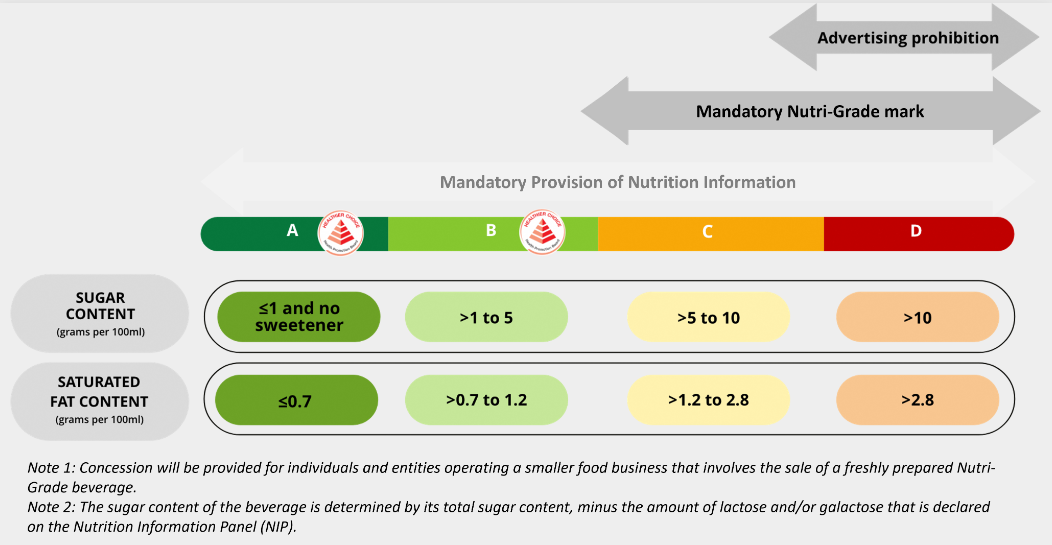As of 30 December 2022, all pre-packaged drinks and non-customisable automated beverage dispensers are required to display Nutri-Grade labels to better inform consumers of the “healthiness” of their drinks. They are also subjected to advertising prohibition measures.
On 30 December 2023, these measures extended to freshly prepared beverages intended for sale at specified settings in Singapore.
This includes drinks like bubble tea or drinks from The Coffee Bean & Tea Leaf.
But if you’d have realised, some drinks might not have the labels.
Read on because it’s not exactly “compulsory”, or if you want to, you can watch this video to the end instead:
Before anything, you need to know how they’re graded.
The Grade is Determined By Two Things
Since Nutri-Grade labels often display the drink’s sugar level, you may think that the Grade is determined simply by a drink’s sugar content.
However, these labels also factor in the saturated fat level.

Nutri-Grade labels do not discriminate between natural nutrients (such as sucrose in fruits) and nutrients added by the manufacturer.
This means that drinks like 100% orange juice, which contains lots of sugars, may not get their “A” grade.
Even full cream milk will contain a lot of saturated fat and sugar.
Look at the Nutri-Grade grading system below.

Since Nutri-Grade grading only takes into account sugar and saturated fat, some drinks can “cheat” by using artificial sweeteners.
However, to be an A-grade drink, a drink should have no sweeteners. This means that the “cheating” drink would be bumped to a “B”.
Why Don’t Some Drinks Have Nutri-Grade Labels?
During your shopping, you may have noticed that many of your favourite soft drinks do not have the label.
Are they cheating?
No.
This is because the labelling of the Nutri-Grade mark is optional for drinks graded “A” or “B”.
Only drinks with the “C” or “D” grade are required to display the label.
This may be why you rarely see drinks with the “A” or “B” grade as most companies simply don’t include the label.
Many companies reduced the sugar and saturated fat content of their products to avoid having to display the Nutri-Grade label.
A pretty smart move by the Ministry of Health (MOH).
The best part is, the drinks don’t really taste that different. If I gave you two versions of a soft drink – one before sugar reduction and one after – you might not be able to tell them apart.
While drinks graded “D” are not allowed to be advertised on social media platforms, they can, however, have posters or banners in the places they are sold.
The Nutri-Grade must still be shown on the posters.
This System Actually Works
A study has shown that with this grading system, people have been buying more drinks with the “A” or “B” rating and avoiding those with the “C” or “D” rating.
To get a better Nutri-Grade, companies have been reviewing their products and reducing their sugar and saturated fat levels.
Child obesity is on the rise in Singapore, and the Ministry of Health (MOH) has urged the public to exercise and adopt a healthier diet.
Since sugar is one of the main culprits of weight gain, this system should help many manage their weight better and lessen the risk of obesity.
Now you can drink your favourite ice lemon tea with less sugar but the same taste.




